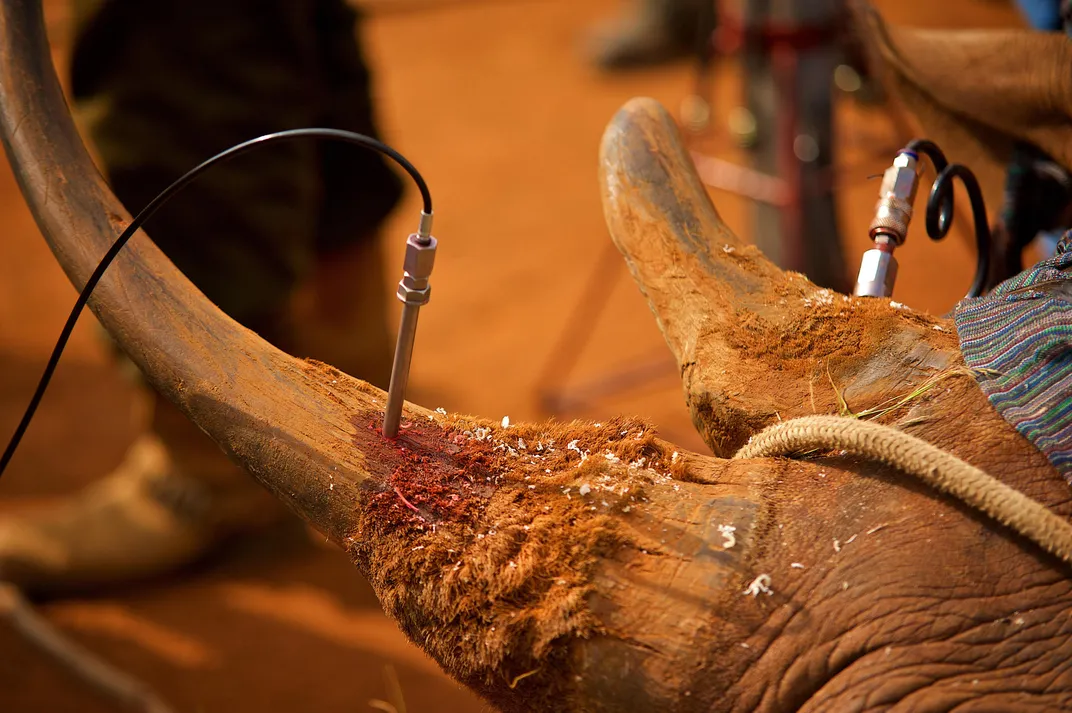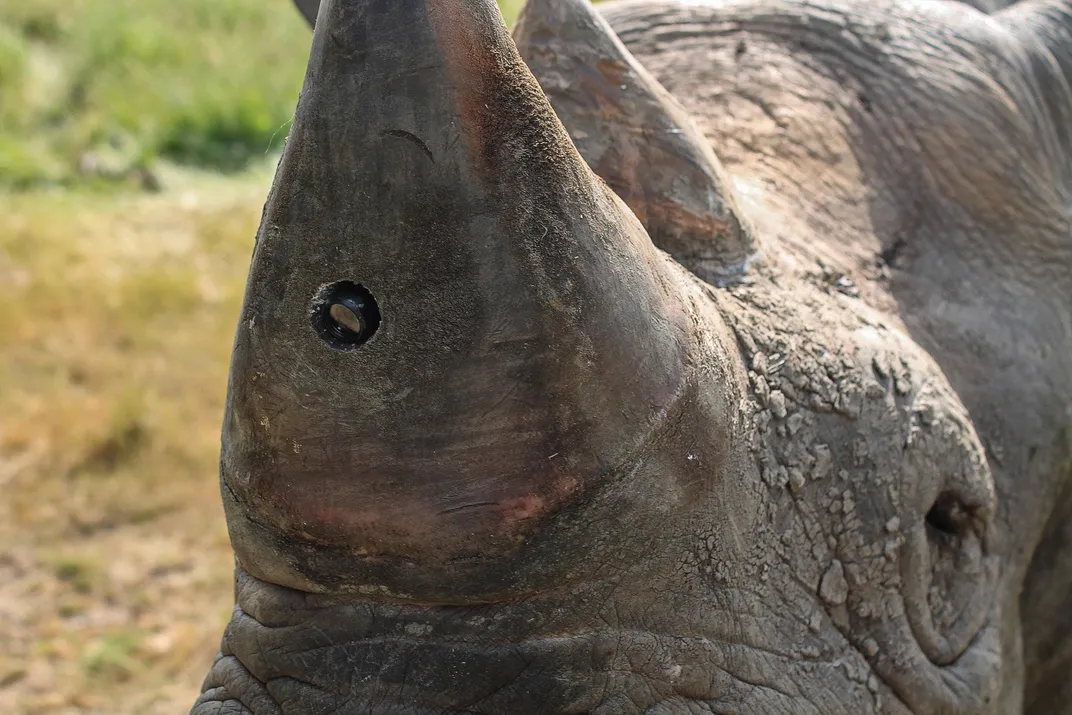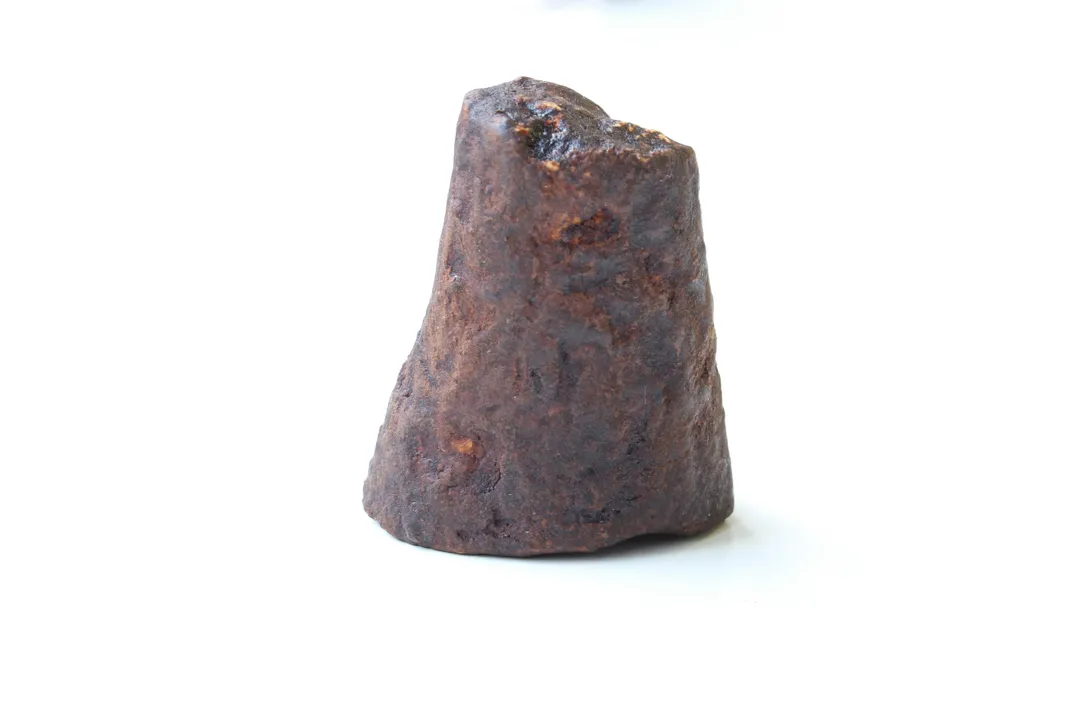How Technology May Help Save the Rhino From Extinction
Horns grown in a laboratory and hidden cameras could be the key to tackling this conservation challenge
On the black market, a pound of rhino horn goes for $30,000—an irresistible sum for the merciless poachers and criminal syndicates that illegally slaughter thousands of rhinos each year in Asia and especially Africa. But now there’s a new way to manufacture a facsimile of the coveted material—one of several high-tech efforts to put poachers out of business and save rhinos in the wild from extinction.
Pembient, a Seattle-based bioengineering firm, is using advances in genomic sequencing and DNA synthesis to make knock-off rhino horn in the lab. “If there was ever a time to try something, this would be it,” says Matthew Markus, the company’s co-founder. The start-up’s strategy is based on his observation that pirated software can ruin a tech company that made the original product. Pembient uses yeast engineered with genes that produce rhino keratin, the major protein in horn (also in human hair and nails). After extracting the keratin from the yeast, the technicians mix it with rhino DNA, so the final product has a genetic signature similar to that of actual rhino horn. Markus says he foresees the day when illicit buyers will use genetic tests to authenticate their loot, and he wants his counterfeits to pass muster. In time he hopes to grow—or 3-D print—entire horns and flood the black market with them, eliminating the incentive to kill the two-ton animals for the sake of their three- or four-pound horns.
A hundred years ago there were 500,000 rhinos worldwide; today there are perhaps 30,000, and four out of five rhinoceros species are classified as vulnerable or critically endangered. Last year, in South Africa alone, poachers killed more than 1,200 rhinos, and 2015 is on track to be just as bad.
Another high-tech remedy is underway there. Members of the Rhino Rescue Project capture a live animal and painlessly inject an antiparasitic drug and a dye into the horn; the chemicals, though harmless to the animal’s health, disfigure the horn, rendering it useless as an ornament or, ground up, as traditional medicine, since the injected drug can cause nausea, vomiting and convulsions in people. “We’ve lost only seven animals over a five-year period,” says Lorinda Hern, a co-founder of the organization. “This is a triumph by any standard, especially when you consider that South Africa is losing four animals to poaching a day.”
In yet another approach, Protect, a British nonprofit group, has begun implanting South African rhinos in national parks with heart-rate monitors and embedding video cameras in their horns. Whenever an animal’s heart rate jumps, a radio collar sends an alarm, along with GPS coordinates, to park officials, who dispatch rangers to the site by truck or helicopter. “Typically, an anti-poaching force finds out about an incident days later,” says Steve Piper, Protect’s director. “In this case, they’re hot on the poachers’ tracks.” The hope is that poachers eventually will view rhinos wearing the radio collar—bright turquoise for maximum effect—as not worth the risk.
Related Reads

The Last Rhinos




